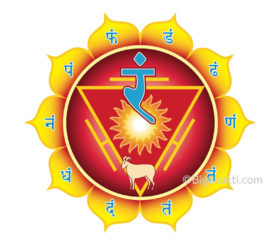This website uses cookies so that we can provide you with the best user experience possible. Cookie information is stored in your browser and performs functions such as recognising you when you return to our website and helping our team to understand which sections of the website you find most interesting and useful.
Origin of Yoga Nidra: Unveiling its Beginning

The Origin of Yoga Nidra
The form of Yoga Nidra we teach was developed by Satyananda Saraswati of the Bihar School of Yoga, India. He began developing the technique in the 1960s while living with his guru, Swami Sivananda of Rishikesh, India. Using this technique results in profound relaxation, stress reduction, initiating healing processes, and personal transformation. “
Yoga Nidra has been rebadged by various groups who have tweaked the original system with minor variations. It has also been given different names, such as Non-Sleep Deep Relaxation (NSDR). At the same time, there is a lot of confusion about the term Yoga Nidra and who developed the technique.
To understand its origin, you must understand that the term has two different and distinct meanings. It is used to describe:
- The state of Yoga Nidra – which is a sophisticated Indian philosophical concept.
- The technique of Yoga Nidra – which is a method of relaxation meditation derived from the tantras designed to achieve physical and mental health and the state of yoga Nidra.
The main problem is the misconception that the relaxation meditation technique and the state of Yoga Nidra are the same.
The State of Yoga Nidra
Yoga Nidra is a profound state achieved when a yogi attains the state of samadhi, where the individual consciousness merges with the universal consciousness, known as the cosmic Self. In this transcendental experience, the boundaries of the ego dissolve, and only cosmic consciousness, the cosmic Self, remains. Practices that lead to the dissolution of the ego have been called Laya Yoga.
The concept of Yoga Nidra can be traced back to ancient Indian scriptures like the Upanishads and the Mahabharata, where sages and seekers explored the depths of meditative states to connect with their innermost being and the cosmic consciousness that permeates all existence. Through dedicated practice and unwavering focus, yogis aim to tap into this state of absolute consciousness, transcending the limitations of the physical world to touch the essence of their true selves and the interconnected fabric of the universe.
The Markandeya Upanishad
The state of Yoga Nidra is mentioned in the Mandukya Upanishad, which describes the three states of consciousness, waking, dreaming, and deep sleep, and Yoga Nidra, which refers to conscious awareness of the deep sleep state as a fourth state of consciousness. This conscious deep sleep state is referred to as prajna and turiya in Mandukya Upanishad. The Sanskrit word prajna means a state of transcendental wisdom, higher knowledge, and discrimination between the real and the unreal. Turiya means the fourth state of consciousness, superconsciousness, which is simultaneous awareness of the conscious, subconscious, and unconscious mind.

Vishnu and the goddess Yogandira
Many Indian philosophical and mythological texts refer to Yoga Nidra as the state that occurs when the Indian godVishnu sleeps at the time when creation is destroyed (called pralaya). Vishnu is the cohesive power of the universe, so when he sleeps, the universe dissolves.
Many ancient Indian texts, such as the Mahabharata (1.19.13), the Vishnu Mahapuraṇa (6.4.6), and the Bhagavata Purana (1.3.2), describe Vishnu (the sleeping lord) reclining on the Sheshanaga, the king of serpents in yoga nidra. The supreme god Vishnu sleeps on Sheshanaga when the universe is absorbed back into his being. Vishnu sleeps between the cycles of the universe (yuga), coming into and going out of existence.
Yoganidra is the name of a goddess in the Devī Mahatmya (1.65-85), which is part of a larger text called the Markaṇḍeya Puraṇa. Vishnu sleeps when the goddess Yoganidra enters his eyes. Brahma implores the goddess Yoganidra to wake Vishṇu so that he can fight the two great demons, Madhu and Kaiṭabha, and save the world.
These early references to yoganidra do not refer to the relaxation meditation called Yoga Nidra; rather, they describe a god’s (Vishnu’s) transcendental sleep and the goddess’ manifestation as sleep.
The Tantras
Evidence for the term yoganidra in the context of meditation can be found in several Shaiva and Buddhist Tantras, where it is described as peace beyond words obtained from the guru’s teachings. Here again, it represents an exalted state of being and not a meditation technique.
The term tantra, in this context to any text, theory, system, method, instrument, technique or practice to liberate energy and awaken higher consciousness.
The yoga texts
In the 11th and 12th centuries, the term Yoga Nidra was used to describe the state of samadhi, a state of absorption into infinite consciousness. Samadhi occurs when the mind ceases to function, and only awareness and consciousness remain.
The 12th-century Raja Yoga text, the Amanaska, states that samadhi is like sleeping and waking but beyond both. Samadhi is a yogic sleep in which the yogin is asleep to the mundane world but awake to a reality beyond sense objects. The Amanaska (2.64) states: “Just as someone who has suddenly arisen from sleep becomes aware of sense objects, so the yogin wakes up from that [world of sense objects] at the end of his yogic sleep. The word amanasaka means a mind free from thought and desire. Manas means mind, so amanas means no mind.
The techniques used to achieve the state of Yoga Nidra are shambhavī mudra, gazing at the eyebrow center to activate ajna chakra, and khecharī mudra, folding the tongue back so that the base of the tongue touches the roof of the mouth. The other technique is unmanī mudra, in which the eyes are half open, half closed, and the gaze internal while remaining motionless and contemplating eternity.
Yogatārāvalī
The Yogatārāvalī (24-26), a 13-14th century yoga text, describes the yogic sleep of samadhi (yoganidra). It states that Yoga Nidra removes the yogi from the world of multiplicity. It does this when the yogi has renounced all their former attachments. As a result, extraordinary happiness arises, and all karmas cease to affect the yogi.
Hatha Yoga Pradīpika
In the Hatha Yoga Pradīpika, the author, Yogi Swatmarama, states that “Khecharī mudra (folding the tongue back in the mouth to support introversion of consciousness) should be practiced until Yoga Nidra, yogic sleep, occurs. Time becomes non-existent for one who has attained Yoga Nidra, and death is conquered.” (Ch 4, V.49).
In the Hatha Yoga tradition, the final stages of practice are called Laya Yoga, or absorption of the ego and the mind into infinite consciousness.

The Technique of Yoga Nidra
Wikipedia is only partially correct
Wikipedia states, “A state called yoga nidra is mentioned in the Upanishads and the Mahabharata, while a goddess named Yoganidra appears in the Devīmahatmya. Yoga nidra is linked to meditation in Shaiva and Buddhist tantras, while some medieval hatha yoga texts use “yoga nidra” as a synonym for the deep meditative state of samadhi. These texts, however, offer no precedent for the modern guided meditation technique, which derives from 19th and 20th-century Western “proprioceptive relaxation,” as described by practitioners such as Annie Payson Call and Edmund Jacobson.”
The problem with Wikipedia’s information is that the form of relaxation developed by Jacobson does not resemble Yoga Nidra at all. Jacobson developed a technique called Progressive Muscular Relaxation as part of a system of psychosomatic medicine. The method involves contracting various parts of the body to reduce muscular contractions. On the other hand, Swami Satyananda developed Yoga Nidra from the tantric practice of nyasa, in which awareness or a mantra is systematically placed on parts of the body.
Wikipedia also states that the modern form of the technique, pioneered by Dennis Boyes[2] in 1973, made widely known by Satyananda Saraswati in 1976[1], and then by Swami Rama, Richard Miller, and others, has spread worldwide. Boyes writes that he had traveled to India and learned the method there. He then described this technique in his book The Yoga of Sleep[2]. So, it is probably true that Boyes was the first to publish it rather than the technique’s originator.
Nyasa
Nyasa is one of the characteristic feature of Yoga Nidra meditation. It is the systematic rotation of consciousness in the body. Nyasa means ‘to place’ or ‘to take the mind to a point. During nyasa, a yogi consciously touches various parts of their body while repeating mantras. When this is done in the prescribed manner, the yogi can awaken subtle energy within the physical matter of the body.’ Practicing nyasa and gaining its desired benefit requires the capacity to pronounce Sanskrit terms correctly and a sophisticated understanding of the method.
Swami Satyananda introduced this element when he developed Yoga Nidra. Instead of using mantras, Swami Satyananda asked people to recite the name of the part of the body they were placing their attention on during the rotation of awareness through the body. Using the part of the body instead of a mantra made the technique of nyasa practical and easy to access. It enabled a meditator to relax the physical body so that their consciousness could penetrate the deeper layers of their being.
He recognized that simply directing our awareness to a specific body part would relax and recharge that area – opening a doorway into other parts of the body and mind for further healing and rejuvenation.
The rotation of awareness through the body is the hallmark of and demonstrates the origin of Yoga Nidra meditation, which comes from Swami Satyananda.
Swami Satyananda wrote, “The present system of Yoga Nidra, which I have devised, enables people unfamiliar with Sanskrit mantras to gain the full benefits of the traditional nyasa. People of any religion or culture can beneficially practice it.”
Swami Satyananda made Yoga Nidra available for everyone.
Swami Satyananda recognized that complex and ancient yogic and tantra techniques had great potential but needed to be translated to fit our modern lives. He saw a deep need for simple techniques with great power to reduce stress and suffering.
He simplified the ancient yoga-tantra methods and made them both accessible and practical. By making highly complex and advanced techniques accessible to everyone, Swami Satyananda has contributed significantly to the health and well-being of people of all ages, abilities, and backgrounds.
Yoga Nidra, originating from ancient yogic practices, has gained popularity in modern times as a potent relaxation meditation and stress reduction technique. By delving into a state of deep rest, individuals practicing Yoga Nidra can effectively combat the negative impacts of stress on their overall well-being. This practice is not only beneficial for enhancing emotional resilience but also plays a crucial role in promoting better sleep quality.
Moreover, the profound effects of Yoga Nidra extend to improving mental health by providing practitioners with a tool to manage various forms of physical and mental illnesses. Regular utilization of Yoga Nidra has been found to significantly enhance mental and emotional well-being, thereby reducing anxiety levels and mitigating the occurrence of conditions such as headaches and menstrual irregularities.
Additionally, the therapeutic benefits of Yoga Nidra are manifold, with research indicating its positive impact on alleviating symptoms associated with a wide range of health issues. By incorporating this practice into their routine, individuals can experience a holistic improvement in their overall health and vitality. The deep relaxation induced by Yoga Nidra enables individuals to tap into their body’s innate healing abilities, fostering a sense of balance and harmony within themselves.
[1] Saraswati, Swami Satyananda, Yoga Nidra, Bihar School of Yoga, 1976, p. 3
[2] Le yoga du sommeil éveillé: Méthode de relaxation, yoga nidra
Share
Latest Posts
Meditation
Yoga
Wisdom
Chakras
Get Wellbeing and Wisdom Updates
"*" indicates required fields

